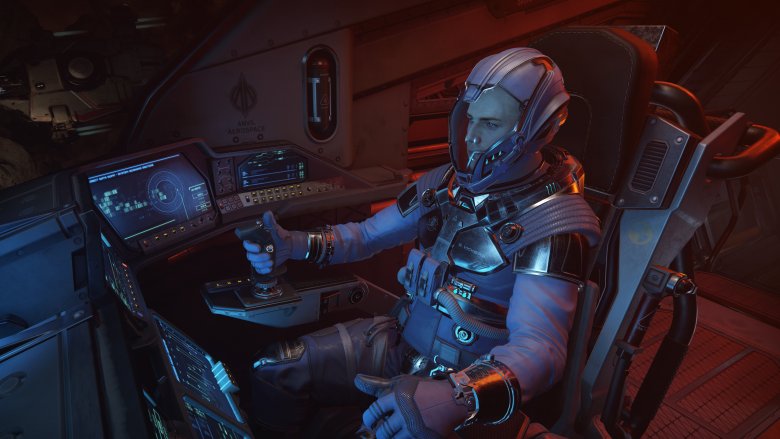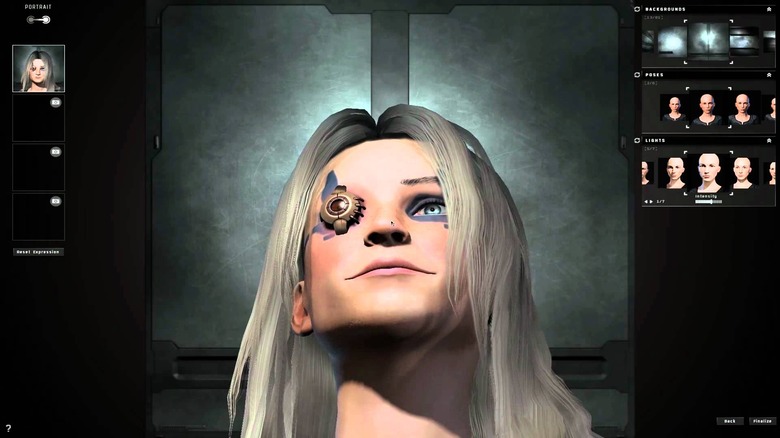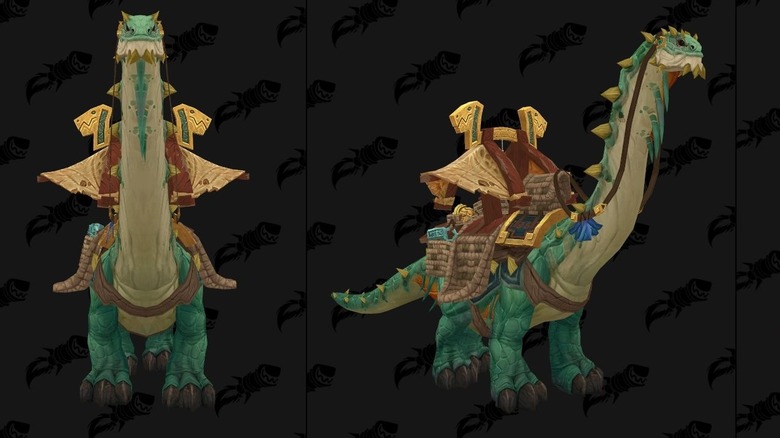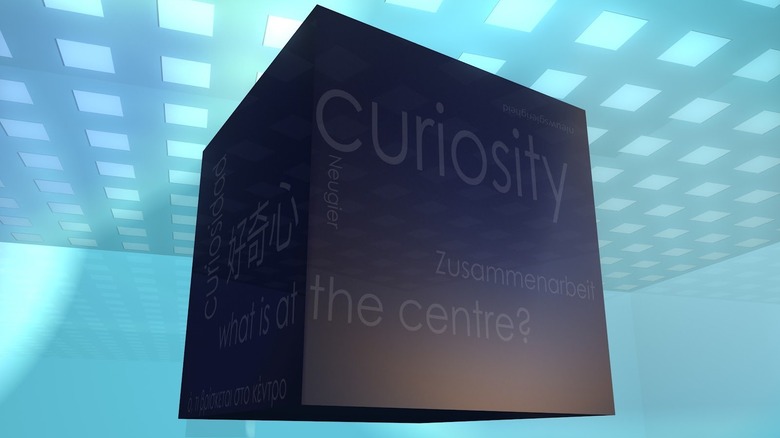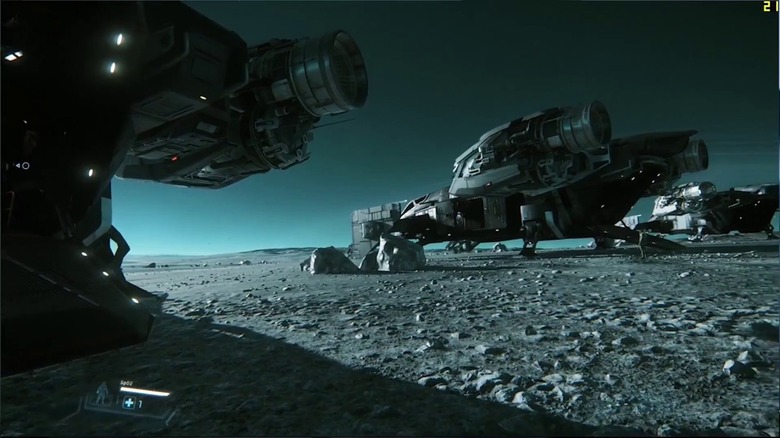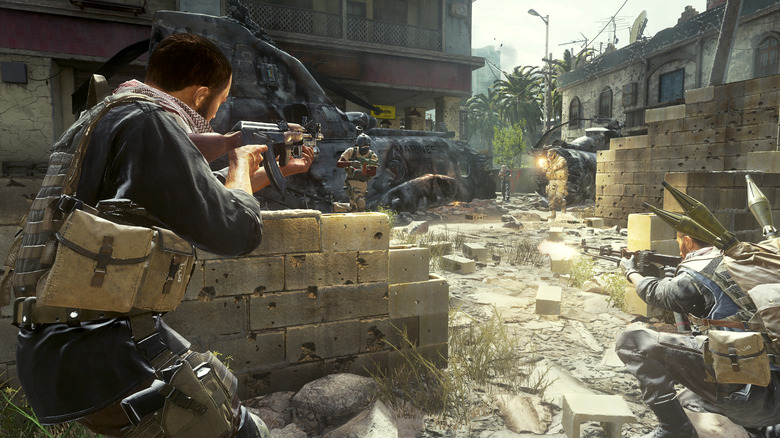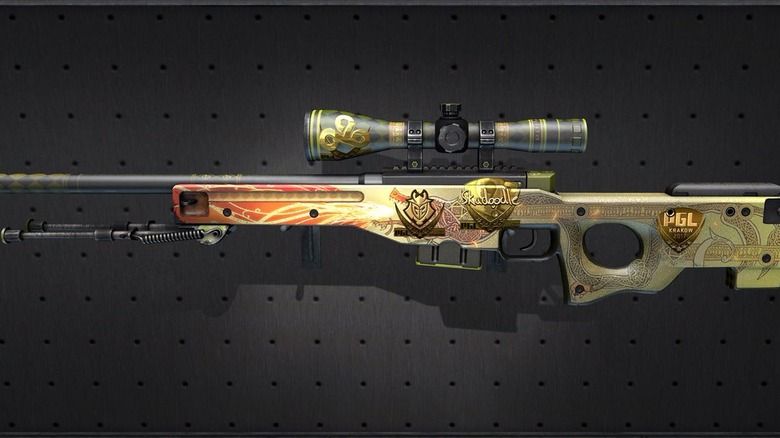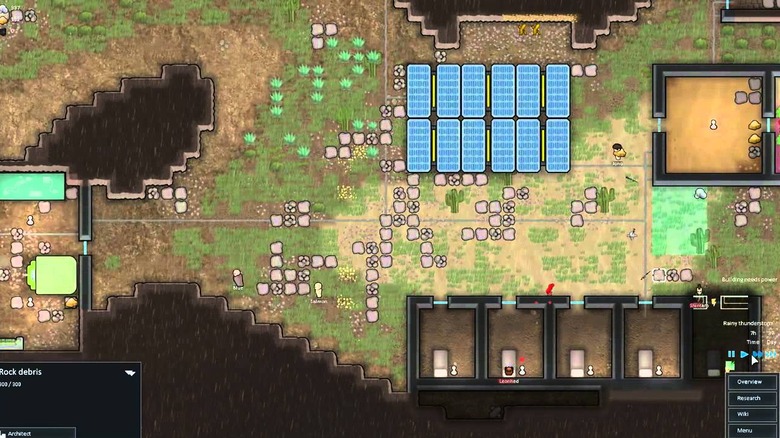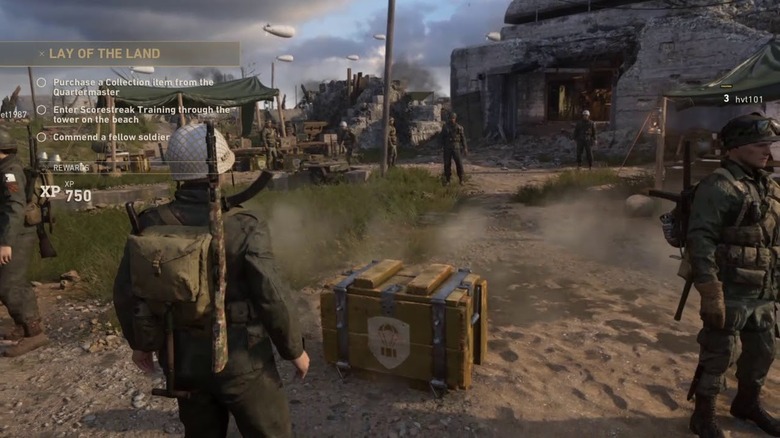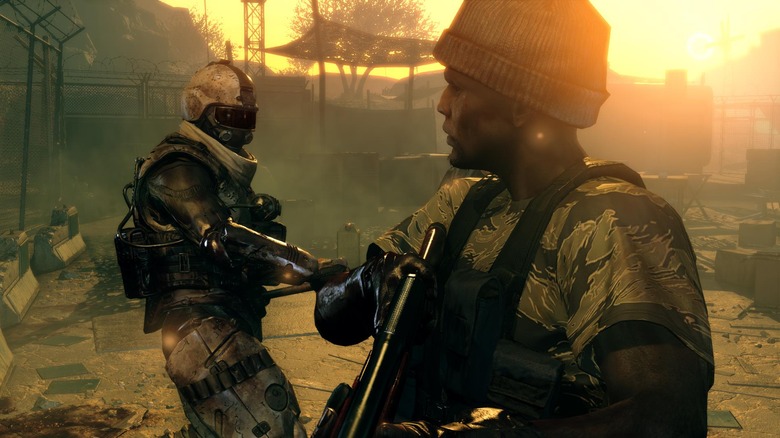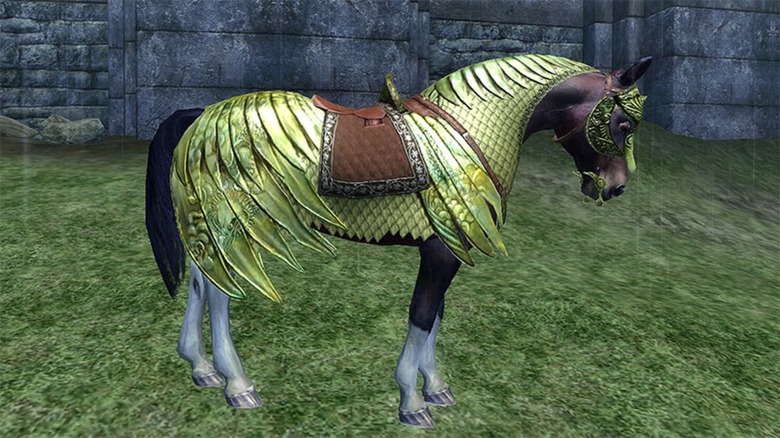The Most Ridiculous DLC
There may be nothing more polarizing in video games than DLC.
DLC, which stands for "downloadable content," is typically rolled out after a game has already released. It can take just about any shape, from additional story missions to new characters to map packs. And the price of DLC can vary quite dramatically. A character skin might only cost you a few bucks, while a story expansion pack could come in at $20, $30, or even $40.
Some argue that DLC is a way to fleece gamers. Others point to the rising cost of game production and the fact that major titles have, for the most part, remained at the $60 price point for over ten years. Something has to give, according to the defenders of DLC, and selling extra content is a way to cover a game's cost while also extending its life.
Regardless of which side you're on, we think everyone can agree that some DLC goes way too far. And it's the crazier types of DLC we want to take a look at today. Below, you'll find a slew of video game extras that cross the line from being reasonable into the realm of being absolutely bonkers.
EVE Online's $70 monocle
Little kids used to love their dolls and action figures, dressing them up in different types of clothing or arming them with tiny plastic weapons. You'd think growing up would shake our desire to play dress up with our make-believe characters, but if you've ever obsessed over your Destiny armor or contemplated buying a Fortnite skin, it's clear that's not the case.
We get attached to our creations in the games we play. And sometimes we want them to look cool.
But ask yourself: is it worth buying a $70 monocle in EVE Online to express yourself? It's an option for players of the MMO, and while there's no evidence it'll actually help you see better, you'll certainly stand out from those who didn't spend a whole bunch of dough on an accessory. That's more than the cost of a whole video game! But here's something even more shocking: compared to some of the other DLC items on this list, EVE's monocle is actually cheap.
World of Warcraft's $500 mount
In World of Warcraft, a mount is a mode of transportation that can help you move around the game world. It's like your horse in Skyrim, except in WoW, you can ride a mammoth, a giant serpent, or even a sea turtle. But there's one mount in particular that got a lot of attention not just from the World of Warcraft community, but from those who don't even play the game. It's the brontosaurus you see above and it costs nearly $500.
To be fair, this mount can do something that others can't. It has a portable auction house strapped to its back, making it possible for players to make some gold outside of their capital cities. But the in-game gold price for the mount — 5 million — means that only those who are well-off in the World of Warcraft universe can afford the prehistoric ride. That is, unless they pay some real-world currency.
As they say, it takes money to make money.
Train Simulator's $3,000+ worth of add-ons
If you're a train nerd — sorry, train aficionado — you might be the type of person who enjoys model train kits, or taking photographs of trains as they pass by. You might also be the type of person the Train Simulator series was made for.
Train Simulator is one of those games that tells you everything you need to know in the title. You get full reign over all aspects of controlling trains, going full throttle or applying the brakes as you choose. You can assemble your line of train cars as you desire and take cargo on a number of different routes. You can even adjust the weather if you'd rather play the role of conductor on a sunny day. And in Train Simulator 2016, you can buy a whole lot of DLC to supplement the experience. Over $3,000 worth.
There are new train routes to buy, new train cars to acquire, and asset packs to help you spruce up the trains under your command. You don't have to buy all of them, but if you're a collector and are willing to spend money to have all the things, Train Simulator 2016 is ready to feed your hobby. Just make sure you get a second job to fund it all.
Maybe as a conductor.
Curiosity's $50,000 chisel
The game Curiosity certainly lived up to its name when it released on mobile back in 2012. Peter Molyneux — best known for his work on the Fable franchise — was behind the game, which he billed as a social experiment that only one person could win. Players who downloaded Curiosity could play for free or spend money on chisels of varying strength, and anyone with a few minutes to spare could chip away at the game's large, mysterious cube, hoping to be the one who finally discovered its secret.
Rather controversially, Molyneux offered a $50,000 chisel for sale in the game, giving it 100,000 times more power than a free tap. Molyneux claimed he didn't expect the chisel to be purchased, and there's no evidence it ever was. But he and his studio, 22cans, still came under fire for what some called a "sinister" form of DLC.
The cube in Curiosity was eventually broken into a year after the game's release, and the winner — who was promised a whole host of perks by Molyneux and his team — appears to have received none of them. Good thing he didn't spend 50 grand on that chisel.
Star Citizen's $27,000 ship pack
Star Citizen is still very much a game in progress. That hasn't stopped it from garnering a reputation for its DLC: mainly that it continues to pump out all kinds of it, even though development hasn't wrapped on the full game itself. And one of those DLC drops is so absurdly expensive that one has to wonder: what happened to all of Star Citizen's Kickstarter money?
The Legatus Pack is a collection of downloadable content that includes 117 ships, along with some in-game skins and posters that can be hung up in your digital space. And it rings up at an astounding $27,000. With that much money, you could purchase 600 copies of Star Citizen at its $45 alpha price.
If you're really into the ships inside Star Citizen, we suppose you'd find a lot to like about the DLC — especially if you want to inspire envy in others. The two versions of the base game only come with one ship. But still: $27,000?
Activision's price increase on Modern Warfare Remastered's DLC
When a game is remastered for a new generation of game consoles, most companies include that game's DLC in order to create a "Definitive Edition." Along with improved visuals, it offers another selling point for something that players might have already purchased before, but could be convinced to buy again. But most companies aren't Activision.
When Activision unveiled Call of Duty: Infinite Warfare, it came with the news that the company would also be remastering the incredibly popular Call of Duty 4: Modern Warfare in order to sell the two as a bundle. The fact that Activision wasn't immediately selling Modern Warfare separately did not please fans, who promptly made Infinite Warfare's trailer one of the most disliked YouTube videos of all time. But that wasn't even the worst of it.
Somewhere along the way, Activision decided to withhold Modern Warfare's map packs from the remastered version of the game. And then it charged an extra $5 on top of what those map packs cost on the Xbox 360 and PlayStation 3. An older game — albeit touched up — somehow became more expensive, all because Activision wanted more of that sweet, sweet cash.
Counter-Strike: GO's $61,000 signed weapon skin
If you're a huge fan of someone, you might find value in having them autograph something for you. A book signed by your favorite author is something you'd likely treasure and pass down. And a signed football always looks nice up on the mantle, even if that player never donned the colors of your chosen team.
But would you be willing to pay for a virtual autograph? And if so, how much? One Counter-Strike: Global Offensive player answered that question by spending an obscene amount of dough: $61,000 for a weapon skin signed by pro player Skadoodle.
Are there some advantages to an autograph that only exists on a textured 3D model? Sure. You won't ever have to worry about accidentally smudging the ink. You'll never lose it in a fire or flood. And you can actually use that weapon without doing any damage. But a $61,000 downloadable piece of content that contains one difference — a signature — seems like a pretty large price to pay for something that could totally disappear with the flick of a server switch.
Then again, someone who spends $61,000 on a gun skin is probably doing okay.
RimWorld's $400 Pirate King upgrade
We'll forgive you if you've never heard of RimWorld, a game that Wikipedia calls a "construction and management simulation." You, as the player, have crash-landed on a strange planet and are forced to build up a whole new colony, facing both interpersonal and external challenges along the way. The goal? Survive while gathering enough resources to facilitate a return trip home aboard your spacecraft.
The game, first released in 2013, was developed by a small studio called Ludeon Studios. Because Ludeon also published the title, funds weren't quite as plentiful as if they'd been plucked up and signed to a deal by, say, EA. So Ludeon had to explore other means to raise funds, and one of those fundraising channels included a pretty expensive DLC. How expensive? Try $400.
The Pirate King upgrade, as it was called, did offer a pretty unique perk: players who splurged on the purchase were treated to a sort of DLC that affected the entire game. They'd get a whole new character added to RimWorld based on them, and the team at Ludeon would write a backstory for that character that all other players of the game could check out. But is that worth $400? We suppose you'll have to be the judge of that.
Call of Duty: WWII's Normandy Beach lootboxes
Normandy Beach, for those who have never heard of World War II, was the site of a pretty significant battle. It's where the Western Allies invaded Nazi-occupied France, storming the beaches to help liberate the country from Axis troops. Over 10,000 Allied casualties were tallied for that D-Day invasion alone — over half of them American. Today, Normandy Beach is home to an American cemetery as well as a memorial for those lost.
It's also where players get loot boxes in Call of Duty: WWII.
Yes, the sight of loot boxes in a game focused on one of the world's bloodiest and most damaging wars is pretty awful on its own. But the fact that players who purchase loot boxes get to watch them drop onto Normandy Beach? Some critics thought that was way over the line to the point of being disrespectful to those who fought and died there. It's the second DLC item for Activision on this list, but somehow, this one feels a lot worse than raising the price on some map packs.
Metal Gear Survive's save slots
You don't have to be an old timer to remember when video game save slots were free. But we live in the age of microtransactions and DLC now, where almost anything that can be sold separately will be. We've said goodbye to whole rosters of characters being in a game at launch. We've waved farewell to getting all the missions a game intended to provide. And now they're coming for our save slots, as evidenced by Metal Gear Survive.
The entire idea of charging for additional save slots seems ludicrous on its face, but to understand how this particular title got here, you have to dive into recent events at the company behind it. Konami made a lot of headlines for its falling out with the past director of Metal Gear, Hideo Kojima, and Survive lacked both his leadership and much of his team's talent during development. Survive is mostly a game made to take advantage of the Metal Gear name, and knowing that gives you some context for why Konami felt it could include save slots as DLC. They're just milking the franchise at this point, so why not?
Most reviews caution gamers to avoid Metal Gear Survive entirely. But if you must play, at least avoid the DLC saves.
Oblivion's horse armor
We're not far removed from a time where a fully fleshed-out game came on a cartridge or disc. There was no DLC. There were no microtransactions. There were no little pop-ups trying to hit you up for money. No skinner boxes keeping you hooked on trying to get all the things, even if it meant buying them. There were just games, and though they weren't as pretty as they are today, they felt a little more pure.
We can't help but lay some blame on Bethesda for kicking the whole "ridiculous DLC" craze off with the horse armor it sold in The Elder Scrolls IV: Oblivion.
Oblivion's horse armor was pretty inexpensive by today's standards, coming in at just $2.50. In a world where Fortnite can take you for $20, that's not too bad. But the horse armor was totally useless due to the fact that no one else could see it. Oblivion wasn't an MMO like World of Warcraft or even a shared-world game like Destiny. It was played entirely offline, which meant you were the only one taking in the grandeur of your horse's fancy armor.
Thanks, Bethesda. Thanks for all of this.

